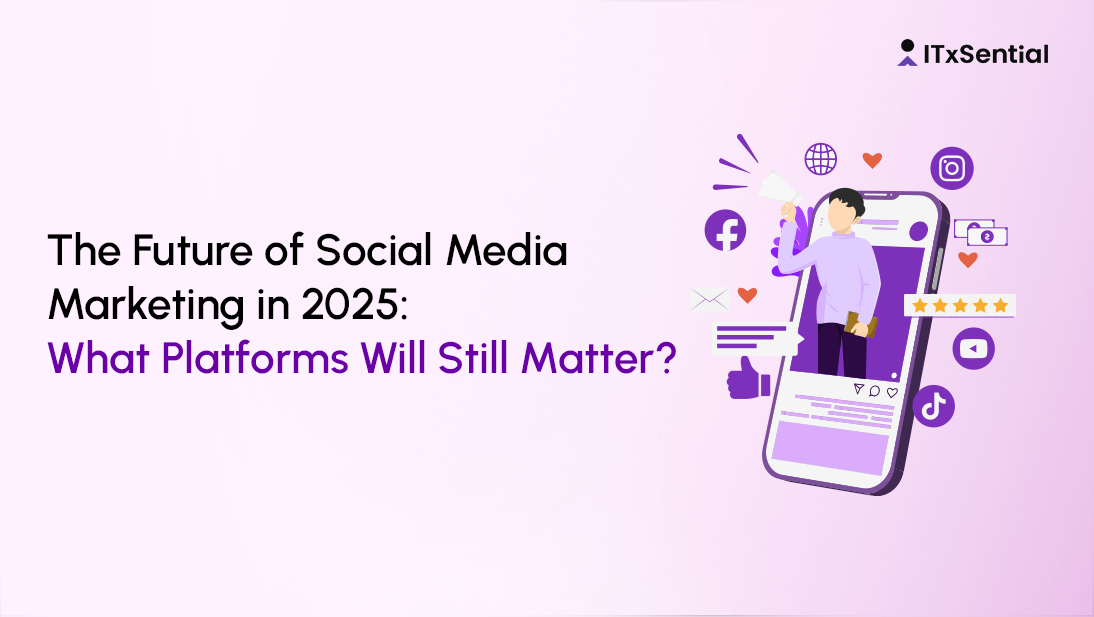Introduction
If you want to plan marketing budgets or hire the next specialist, you need a clear read on social media marketing trends in 2025. This year is shaping up to be less about new apps and more about how platforms evolve: AI-powered creativity, video-first feeds, social search, and deeper commerce integrations. Below I’ll explain which platforms still matter, why, and how to prioritise your efforts for measurable results.
Big-picture trends shaping 2025
1. Generative AI moves from experiment to everyday tool
Marketers are using AI not just for captions or image ideas but to create video drafts, localise creatives, and speed up ideation. Brands that pair AI tools with human judgement are producing more content, faster, and testing more creative variations than before.
2. Short-form video remains dominant (but smarter)
Short-form video still captures attention. Platforms continue to reward formats that keep viewers watching and interacting, and social video is now competing directly with traditional TV for eyeballs and ad dollars. Expect more emphasis on sound, native editing, and performance-focused creative.
3. Social as search and discovery
People increasingly start discovery on social platforms rather than traditional search engines. That shifts priorities: optimise for discoverability inside apps, use keywords in profiles and captions, and lean into trends quickly.
4. Creator-led and community-first approaches
Creator partnerships and community-led growth are now core strategies. Brands that give creators creative freedom and build community experiences — not just transactional influencer posts — see better long-term returns. Influencer marketing budgets continue to grow.
5. Commerce, measurement, and privacy converge
Social commerce features are maturing, and analytics expectations are rising. At the same time, privacy changes force smarter attribution models and blended media strategies that measure value across channels.
Which platforms will still matter — and why

No single platform wins everything. The best choice depends on audience, creative strengths, and business goals. Here’s a quick guide.
YouTube (including Shorts) — reach + intent
YouTube remains central for long-form storytelling and discovery, and Shorts gives you short-form reach at scale. If you need search-style discoverability plus video depth, keep YouTube in the plan.
TikTok — culture, trends, and rapid reach (with a caveat)
TikTok still drives viral attention and cultural trends, especially for Gen Z and younger millennials. Regulatory and market shifts can affect reach in certain regions, so use TikTok aggressively for brand-building but avoid making it your only traffic source.
Instagram — visual commerce and Stories/Reels mix
Instagram remains valuable for visual-first brands, product discovery, and shopping. Reels are essential for reach; Stories and Shops help with conversion funnels. Balance feed content with short-form video and shoppable posts.
X (formerly Twitter) and LinkedIn — conversations and B2B, respectively
X is still useful for real-time conversations, PR moments, and topical reach. LinkedIn remains the best platform for B2B thought leadership and lead generation when content quality and targeting are right.
Facebook — broad reach, refined audiences
Facebook still offers broad reach and deep ad targeting, especially for older demographics and local businesses. It’s less flashy but reliable for direct response and community groups.
How to prioritize channels in 2025
- Start with business outcomes. Match platforms to where your customers discover and convert.
- Lean into video-first creative. Short-form plus at least one long-form channel (YouTube or LinkedIn) is a strong combo.
- Invest in creators and community. Allocate budget to ongoing creator relationships and community activations rather than one-off posts.
- Use AI to scale, not replace. Automate drafts and variations, but keep humans for final edits and cultural tuning.
- Measure holistically. Track outcomes beyond last-click, and blend platform analytics with brand and conversion metrics.
Quick playbook: actions you can take this quarter
- Audit your top three platforms for performance and overlap. Remove one underperformer and test a new format.
- Build 6–8 short-form video variations for top-performing topics and run A/B tests.
- Start a creator pilot with clear KPIs and co-creative briefs.
- Add discoverability signals: searchable captions, topical hashtags, and keyword-optimised profile copy.
- Map how social contributes to revenue with multi-touch or incrementality tests.
Conclusion
Social media marketing trends in 2025 are less about brand-new networks and more about how existing platforms evolve. The winners will be marketers who combine fast creative testing, creator partnerships, and AI-assisted production while measuring impact across the funnel. Prioritise platforms where your audience already spends time, but stay flexible: culture moves fast, and your best-performing channel this month might change next.
Short FAQs — social media marketing trends 2025
Q: Is short-form video still essential in 2025?
Yes. Short-form drives reach and discovery; pair it with longer content for depth.
Q: Will TikTok still matter despite regulatory risks?
Yes for culture and reach, but diversify so you are not dependent on any single app.
Q: How should small businesses allocate spending?
Invest in one high-performing channel, test short-form video, and work with a micro-influencer or creator. Q: Can AI replace human creators?
No. AI accelerates testing and drafts, but humans remain essential for cultural relevance and final quality.

